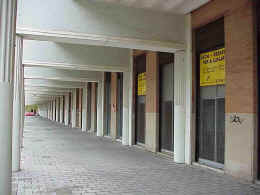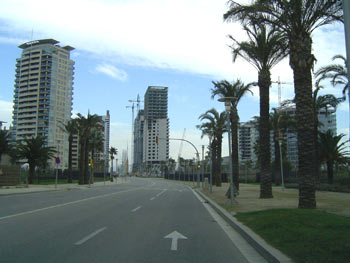|
The Mayor of Barcelona, Joan Clos, has blamed low density
planning for the lack of social and economic life in Barcelona's Olympic Village
and Diagonal Mar districts. There are few people on the streets and public
space, shops or bar terraces are little used by the neighbours. This has led to
plans for a greater density of dwellings in the two new districts that the City
Council is designing, in Zona Franca and Nou Barris.
 |

Olympic Village: empty streets
|
|
In the Mayor's defence of the compact and dense city building
upwards rather than outwards the Eixample of Ildefons Cerdà is seen as a
success. The Eixample has 150 dwellings per hectare, creating a district where
yes, there is life. For Clos, the Olympic Village with 60 dwellings per hectare,
is an example of what should not be done in city planning. The adjacent Diagonal
Mar hyper-community with even lower densities - 48 dwellings per hectare - is
seen as an urban development disaster, despite winning an Urban Land Institute
Award for Excellence. According to Clos, such areas do not contribute to
building a sense of the city. Density determines the nature of community life
and the kind of city created. Future projects should involve the recovery of
higher levels of density.
 |

Diagonal Mar: empty streets
|
|
The British architect Richard Rogers has pointed out the
difficulty of achieving high density in city centres when housing markets value
low density. He stresses the tension that exists in urban development between
money, power and democracy.
Joan Clos was therefore guarded in his voicing his opinion,
since The Diagonal Mar project is supported by powerful developers and
home-building industry, as well as by public authorities earning their share in
the process.
 The
impact of gated communities The
impact of gated communities
| 

